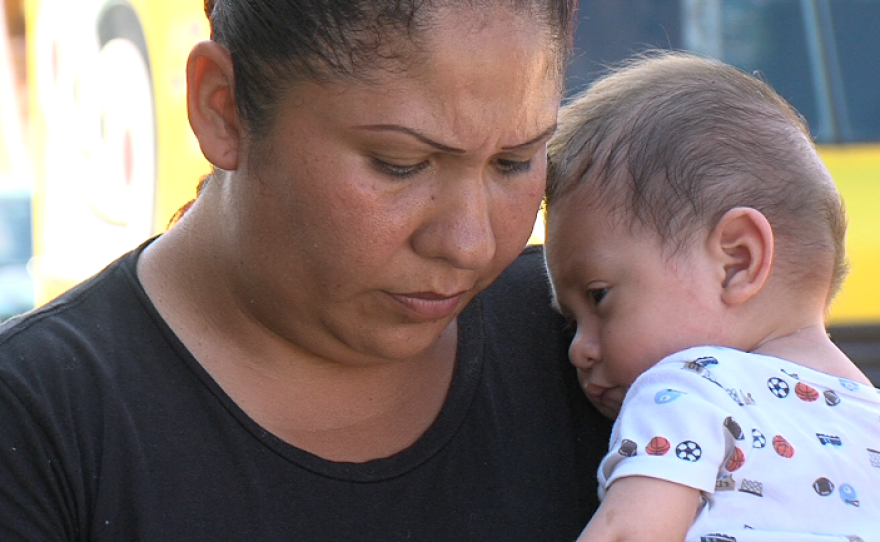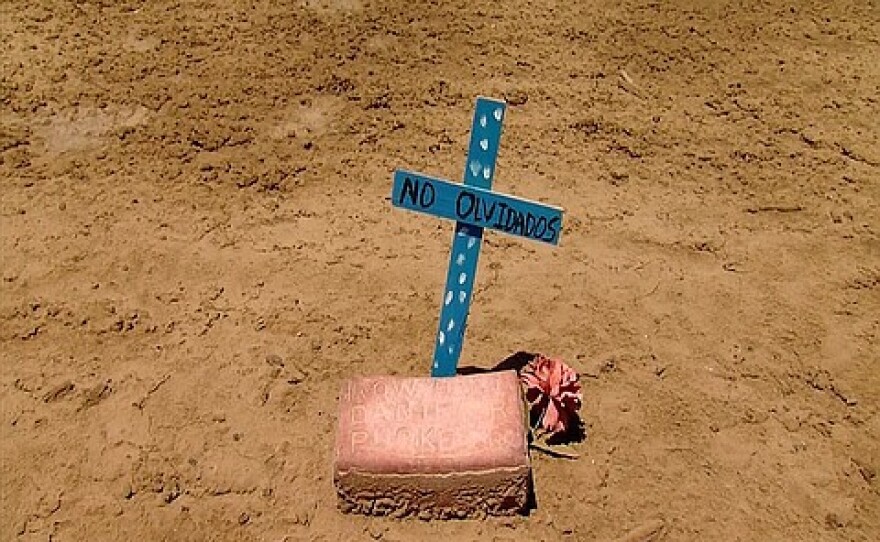Tijuana is getting ready for the so-called “Godzilla” El Niño expected this winter.
Thousands of houses in Tijuana have been identified as “high risk.” Many were built on foundations made of car tires, with plywood roofs prone to leaking, on hills vulnerable to mudslides and flooding.

City officials said they have already visited nearly 6,000 houses to tell residents they should go to temporary shelters when the storms come.
“It’s better to prevent than to correct,” said Tijuana’s director of civil protection, Juan Carlos Méndez Torres, in a Thursday press conference on El Niño preparations.
Méndez said the coming El Niño could prove more destructive than the last one, which took lives and destroyed houses in Tijuana.
“We have a different city and different infrastructure today,” he said, noting that Tijuana is larger now and could suffer more damage.
Leticia Barajas, 31, lives on a steep hill in one of the more vulnerable neighborhoods, Mineral de Santa Fe. She said rain turns the neighborhood into an obstacle course.
“The whole street fills up as if it were a river,” she said. “There’s no passing, you can’t even get out of your house.”
She said the water rushing down the street carries pieces of homes from the neighborhood higher up on the hill.
“Mattresses, everything from up there, it goes tumbling down this street,” she said.
A few blocks away, she said, “a waterfall forms, and it looks incredible.”
During the last El Niño, everyone in her neighborhood evacuated with their belongings. She said even light rains can cause damage here. A few weeks ago, her living room flooded.
Three years ago, she said, city officials stopped by her house with two rolls of a thick impermeable sheet they called “techumbre.” They brought a bucket of glue so that she could attach the sheet to her roof to prevent leaks during storms.
But, she said, it only covers about a third of her roof.
“It isn’t enough,” she said.
Not everyone got some.
Corpus Velasquez, 54, also lives in Mineral de Santa Fe. He said he can’t sleep when it rains because his roof leaks and soaks him when he’s in bed.
“Sometimes I get wet,” he said. “The water comes inside.”
The government said the priority is to tell residents about the dangers of El Niño, and inform them about evacuation routes and shelters that will be available. Officials are aiming to set up at least two temporary shelters per neighborhood.
Representatives from the civil protection agency have already trained 500 people on how to set up their own shelters. Officials said they’re providing supplies such as food, blankets, mattresses and portable stoves.
One of the biggest concerns ahead of El Niño is the city’s large amount of garbage. Trash collection is limited, and residents often resort to throwing theirs on the street. This can clog storm drains, canals and sand traps, contributing to flooding.
Officials have been leading citywide cleanup efforts and have been asking residents not to throw their garbage on the street ahead of El Niño.
“If we as a city help to keep the streets clear of garbage, we can reduce the risk,” he said.
Jose Cruz Valadez Espinoza, 25, drives a truck distributing Sabritas chips to small supermarkets in Mineral de Santa Fe and nearby neighborhoods.
He said rainfall often makes the roads here impassable.
“Lots of garbage accumulates in the drainage pipes and creates lakes that provoke a lot of traffic,” he said.
The roads also get so slippery that his truck skids.
Officials said they have sent about 200 teams with heavy machinery such as tractors throughout Tijuana to continue clearing garbage from canyon ravines, gutters and more.






